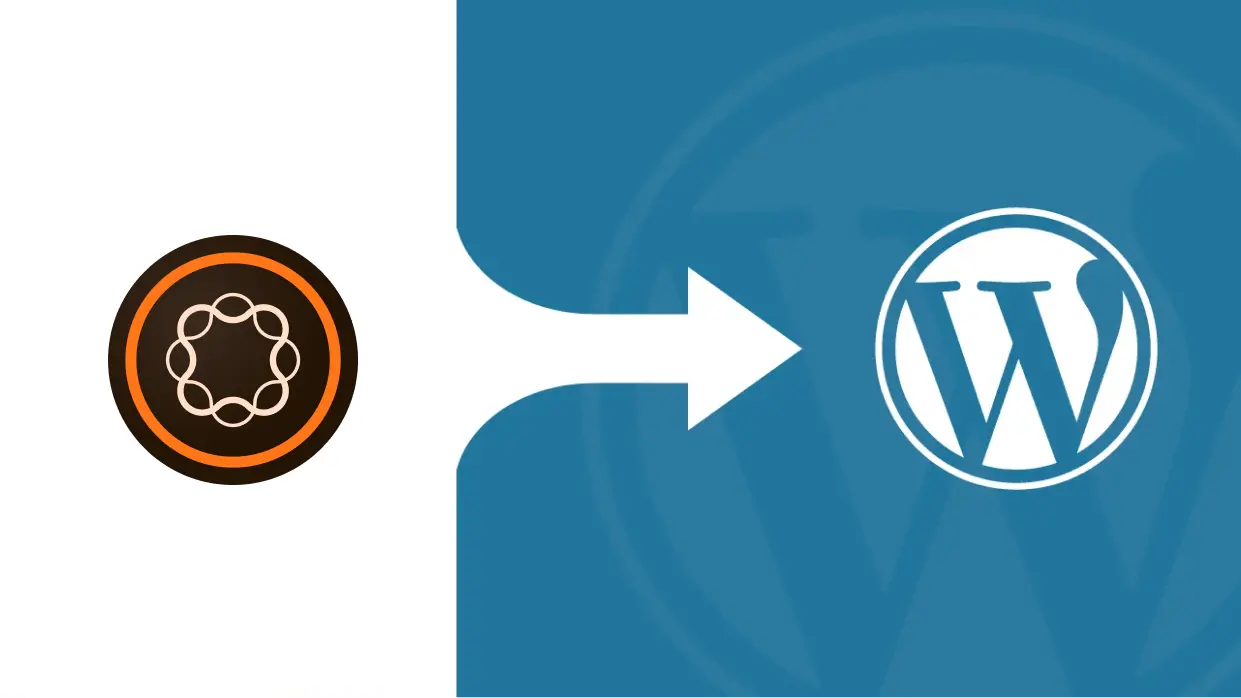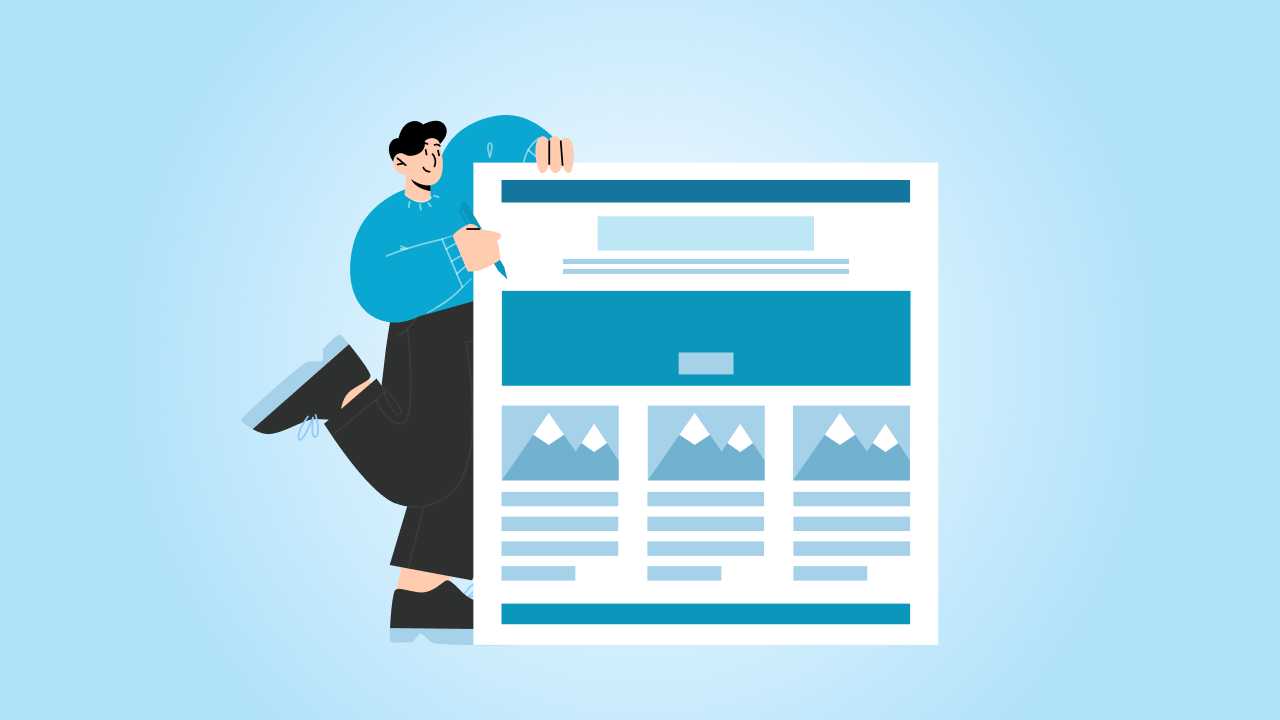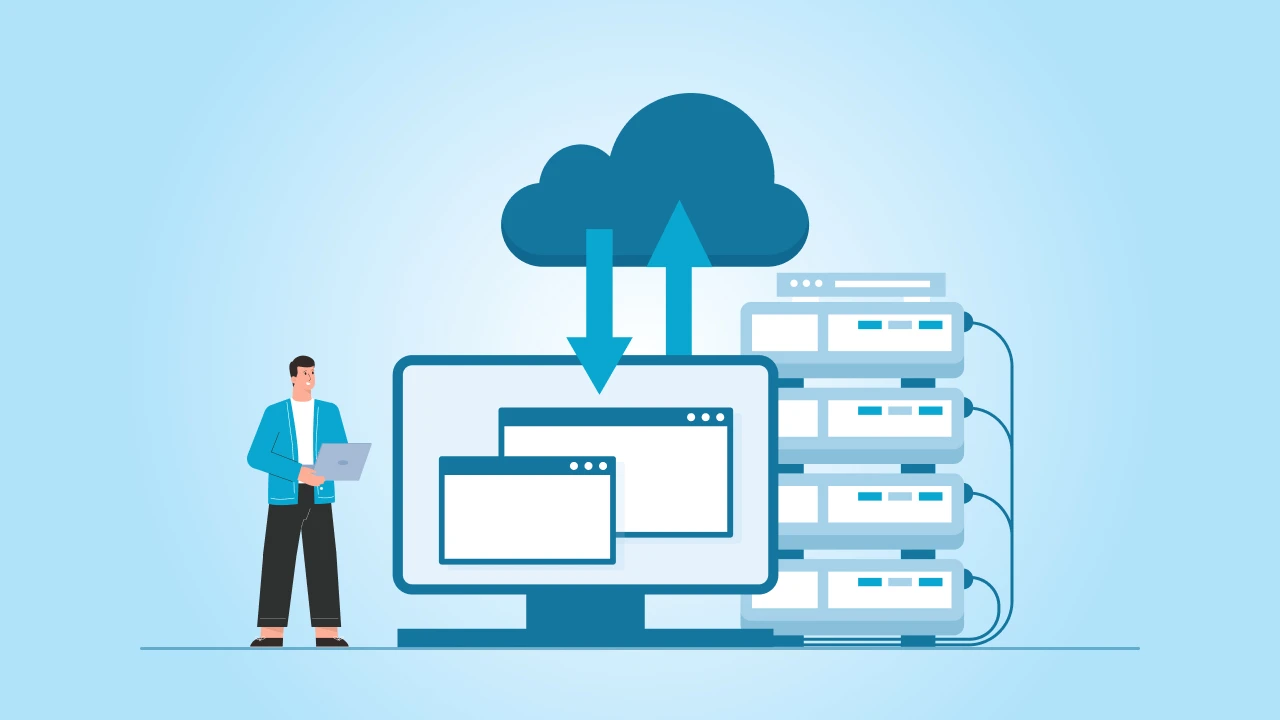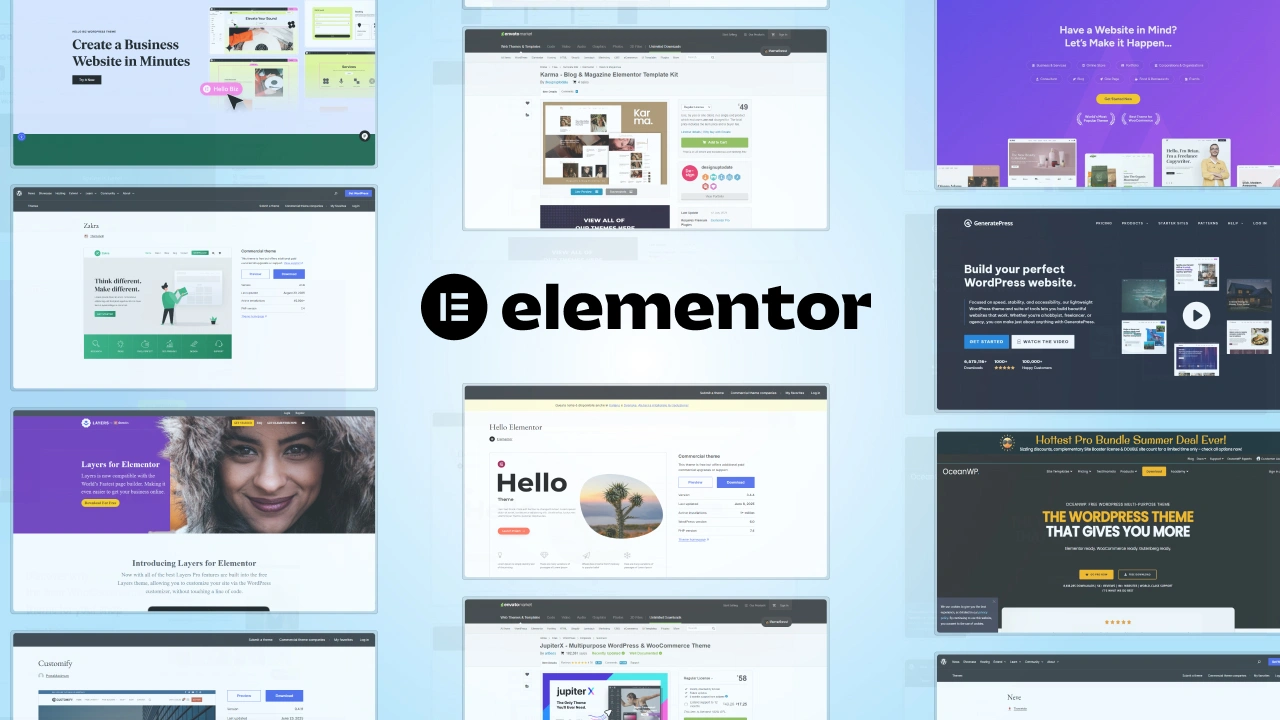If you are using Adobe Experience Manager (AEM), then you already know it’s a powerful platform, but it can also be slightly complex, sometimes hard to learn, and a bit expensive to maintain.
That’s where WordPress often comes into the picture.
Known for being simple, flexible, and affordable, for more than a decade, WordPress has been a popular choice for businesses of all sizes. Whether you are a small startup or a large company, WordPress has the tools, themes, and plugins you need to manage your website easily, without the high costs.
If you are considering switching from AEM to WordPress, you definitely are in good company. Many businesses are making the move for better control and lower costs. But we get it—moving to a new platform can seem a bit scary. What will happen to your content, SEO, or custom features?
Don’t worry! In this guide, we will walk you through the entire migration process step by step. From preparation to execution, you will have everything you need to make the transition smooth, seamless, and stress-free.
Why Migrate from AEM to WordPress?
There is no denying that AEM has its strengths as an enterprise-level content management system. It’s a robust, scalable, and feature-rich platform that is perfect for any large-scale and highly customized website. But with all that power comes a super expensive price tag and a hell of a lot of complexity.
The Complexity and Cost of AEM
While AEM is powerful, it often needs skilled developers, ongoing support, and a big budget to manage. For many businesses, especially those looking to simplify things, this can be a big challenge. High licensing fees, costly maintenance, and the need for a dedicated team can quickly add up, making AEM a tough long-term choice.
If your business doesn’t need all the advanced features AEM offers, you might be paying for things you don’t even use.
The Benefits of WordPress
Switching any cms to WordPress offers a breath of fresh air with its simplicity, affordability, and flexibility.
- Open-Source Flexibility: WordPress is an open-source platform, which means you are not locked into expensive licenses or proprietary systems. You have the freedom to customize your website however you want—whether you hire WordPress developers or use pre-built themes and plugins.
- Cost-Effectiveness: Compared to AEM, WordPress is incredibly cost-effective. You save on licensing fees and web development costs while still getting a platform that’s powerful enough to handle everything from small blogs to enterprise websites.
- User-Friendly Interface: One of WordPress’s biggest strengths is its simplicity. Even team members without technical experience can manage content, update pages, and add media. With its intuitive dashboard, you can spend less time learning the system and more time focusing on your business.
- Scalability with Plugins: WordPress is highly scalable, thanks to its vast library of plugins. Need an eCommerce store? Plugins like WooCommerce make it easy to set up and manage online sales. Want better SEO? Tools like Yoast SEO help optimize your website effortlessly. Whether you’re a small business or a large enterprise, WordPress grows with you.
Of course, migrating from AEM to WordPress isn’t just about saving money—it’s about simplifying your processes, gaining more control, and creating a website that works for you. With WordPress, you get all the tools you need to run a successful website, without the complexity and cost that often come with the AEM platform.
At cmsMinds, we ensure a smooth, error-free transition from AEM to WordPress—on time and within budget.
Pre-Migration Preparation
Before diving into the migration process, it’s important to lay a solid foundation. Proper planning or migration checklist ensures that the transition from AEM to WordPress is smooth, organized, and error-free. Here’s what you need to do before getting started:
- Take inventory of your existing website: pages, content, media files, and third-party integrations.
- Clean up unused or redundant content to avoid transferring unnecessary data. This step ensures you migrate only what’s relevant and valuable.
Backup Data
- Create full backups of your website, including databases, assets, configurations, and any custom functionalities.
- Having a backup acts as a safety net in case anything goes wrong during migration.
Set Migration Goals
- Define the scope of your migration, including timelines and critical functionalities you need to retain.
- Clearly outline priorities, such as preserving SEO rankings, maintaining user experience, or enhancing website performance.
Select Migration Tools or Services
- Choose the right tools and plugins to assist with migration or consider hiring professional WordPress migration company. This decision depends on the size, complexity, and budget of your project.
How to Migrate from AEM to WordPress
Switching from AEM to WordPress doesn’t have to be a headache. In fact, it can be a smooth journey if you take it one step at a time. Instead of feeling overwhelmed, let’s break down the process into manageable actions that will help you migrate efficiently and confidently.
Here’s how to make the shift without the stress:
1. Content Inventory & Mapping
Before moving any content, it’s important to organize and plan first.
- Build a Comprehensive Content Inventory: Create a detailed list of all the pages, blog posts, media files, and other content currently hosted on AEM. Tools like spreadsheets can help you categorize content by type, priority, and location.
- Map AEM Content to WordPress Structure: Plan where each piece of content will live in WordPress. For instance:
- AEM Pages → WordPress Pages
- Blog Articles → WordPress Posts
- Media → WordPress Media Library
- Custom components → Custom templates or plugins
This ensures a clear path for migration without losing track of any content.
2. Export Content from AEM
Once your inventory is mapped, it’s time to extract the content.
- Methods to Extract Pages, Text, and Media: Use AEM’s export tools or custom scripts to extract data in XML, CSV, or JSON formats. For manual extraction, download content piece by piece, though this is time-consuming for larger websites.
- Tools/Scripts for Bulk Export: Utilize tools or AEM-compatible scripts that automate the export of content and assets. This is essential for large-scale sites to save time and ensure accuracy.
3. Import Content to WordPress
Now that your AEM content is ready, you can import it into WordPress.
- Manual Import vs. Automated Tools:
- For smaller websites, you might manually add content to WordPress.
- For larger websites, automated tools streamline the process.
Double-check content placement during this step to ensure accuracy.
4. Rebuild Custom Functionalities
AEM often includes custom components, templates, or workflows. In WordPress, you’ll need to recreate these functionalities.
- Recreate AEM-Specific Components: Identify custom-built AEM features like forms, widgets, or layouts, and find WordPress equivalents or rebuild them.
- Evaluate New Themes & Plugins: Use modern WordPress themes and the block editor (Gutenberg) to replicate your design and functionality. If needed, build custom WordPress themes or plugins to match your previous site’s requirements.
5. Integrate Third-Party Tools & Plugins
AEM websites often rely on integrations for analytics, SEO, or marketing automation. These need to be replaced or reconnected in WordPress.
- Map AEM Integrations to WordPress Alternatives:
- Forms: AEM Forms → WordPress plugins like Gravity Forms or Contact Form 7.
- SEO Tools: Replace AEM SEO features with Yoast SEO or Rank Math.
- Analytics: Reintegrate Google Analytics or other tracking tools.
WordPress offers thousands of plugins to replicate or enhance AEM’s functionalities.
6. Test the Migrated Website
Before making the website live, thorough testing is essential to catch any issues.
- QA Testing for Content Accuracy: Check that all pages, posts, and media have migrated correctly and appear as intended.
- Functional Components: Ensure forms, navigation menus, and custom features are working as expected.
- Design Consistency Across Devices: Test the website on multiple devices (desktop, tablet, mobile) and browsers to confirm responsiveness.
- SEO and Performance:
- Verify proper redirects (301 redirects) for old URLs.
- Test page speed using tools like Google PageSpeed Insights.
- Ensure meta tags, sitemaps, and on-page SEO are intact.
Post-Migration Best Practices
The migration process doesn’t end once your website is live. You have to ensure that your new WordPress site performs optimally and delivers a seamless user experience, it’s important to follow these post-migration best practices:
1. Optimize for Performance
A well-optimized website ensures fast load times and better user satisfaction. Here’s how you can boost performance:
- Implement Caching: Use WordPress caching plugins like W3 Total Cache or WP Super Cache to speed up page delivery.
- Leverage CDNs (Content Delivery Networks): Integrate a CDN (e.g., Cloudflare) to distribute content across global servers, reducing latency for users worldwide.
- Image Compression: Optimize images using tools like Smush or ShortPixel to reduce file sizes without compromising quality.
2. Enhance SEO
Preserving and improving your SEO is critical after migration. Follow these steps to ensure search engines can still find and rank your content:
- Redirect Old URLs: Set up 301 redirects to map old AEM URLs to their new WordPress equivalents. This avoids broken links and maintains SEO rankings.
- Optimize Meta Tags: Use plugins like Yoast SEO or Rank Math to ensure meta titles, descriptions, and alt tags are correctly implemented.
- Generate XML Sitemaps: Enable sitemaps in your SEO plugin to help search engines crawl and index your website efficiently.
3. Security Measures
Securing your WordPress site post-migration is non-negotiable. Here’s how to keep your site safe:
- Update Plugins and Themes: Always keep WordPress core, themes, and plugins up-to-date to patch vulnerabilities.
- Enable SSL: Install an SSL certificate (e.g., via Let’s Encrypt) to ensure your website runs on HTTPS for secure data transfer.
- Use Security Plugins: Tools like Wordfence or Sucuri provide firewalls, malware scanning, and intrusion detection.
4. Accessibility and Compliance
Ensuring your website is accessible to all users is essential for usability and legal compliance:
- Follow WCAG Standards: Make your website compatible with Web Content Accessibility Guidelines to support users with disabilities.
- Add descriptive alt text for images.
- Use proper heading structure.
- Ensure keyboard navigation works seamlessly.
AEM to WordPress Migration Challenges and Solutions
Yes, migrating from AEM to WordPress can certainly save you a lot of costs but then again it’s not without challenges. So understanding these obstacles ahead of time allows you to plan effectively and ensure a smooth transition.
Let’s look into those challenges a bit up close and how to tackle them.
1. Handling Large Data Exports/Imports
AEM websites often contain a significant amount of content, media, and complex data structures. Migrating this data to WordPress can be time-consuming and error-prone.
How to Overcome It:
- Use Automation Tools: Tools like WP All Import or custom scripts can automate bulk data imports, saving time and reducing errors.
- Break Content into Phases: Divide content into smaller chunks (e.g., blog posts, media files, and pages) and migrate them step by step.
- Clean Up Before Migration: Conduct a pre-migration audit to remove redundant or outdated content so you are only transferring what’s necessary.
2. Maintaining SEO Rankings Post-Migration
One of the biggest concerns during migration is preserving your hard-earned search engine rankings. A sudden drop in SEO performance can impact traffic and visibility.
How to Overcome It:
- Set Up 301 Redirects: Redirect old AEM URLs to their corresponding WordPress URLs to prevent 404 errors and ensure a smooth transition for search engines.
- Preserve Metadata: Use SEO plugins like Yoast SEO to retain meta titles, descriptions, and alt tags. These elements are crucial for maintaining rankings.
- Generate and Submit a New XML Sitemap: Submit an updated sitemap to Google Search Console to help search engines crawl your new WordPress site efficiently.
- Test and Fix Broken Links: Use tools like Screaming Frog or Broken Link Checker to identify and fix broken links before going live.
3. Managing Custom AEM Components and Workflows
AEM websites often include highly customized components, templates, and workflows that don’t have a direct equivalent in WordPress. Rebuilding these features can be a challenge.
How to Overcome It:
- Identify Critical Functionalities: List out the custom components or features you absolutely need and prioritize them.
- Recreate with WordPress Plugins: WordPress offers thousands of plugins to replace AEM components. For example:
- AEM Forms → Gravity Forms or Contact Form 7.
- Custom SEO features → Yoast SEO.
- Content blocks → WordPress Gutenberg editor or Advanced Custom Fields (ACF).
Why Hire Professionals for AEM to WordPress Migration
Moving your content over to the WordPress platform is just one element of the whole migration process. There are other elements and aspects such as handling technical details, keeping your SEO intact, and making sure everything runs smoothly without any disruption to your current operations.
Although you can handle a few parts of the migration process on your own, bringing in experts will save you a lot of time, effort, and possibly, frustration. Here’s why:
1. Benefits of Expert Migration Services
- Technical Expertise: Website Migration agencies have the skills and experience to handle the technical challenges of moving from a complex platform like AEM to WordPress. From data exports to custom functionality, they know how to streamline the process.
- Customized Solutions: Experts can recreate your AEM-specific components and workflows in WordPress, tailoring the site to meet your unique business needs. Whether you need custom themes, plugins, or integrations, they’ve got you covered.
- Preservation of Website Integrity: Professionals ensure that your content, design, and functionality are accurately transferred, preserving your website’s quality and user experience.
2. Ensuring Minimal Downtime and Error-Free Migration
- Seamless Transition: Professionals follow a structured approach to migration, ensuring minimal disruption to your live website. Many services conduct the migration in a staging environment first to test and perfect everything before going live.
- SEO Preservation: One of the biggest risks during migration is losing your SEO rankings. Experts handle tasks like URL redirects, metadata preservation, and sitemap generation to safeguard your search engine performance.
- Faster Turnaround: What could take weeks for an internal team to figure out can be completed efficiently by a team of professionals. Their streamlined process saves you valuable time.
- Risk Management: By relying on experienced professionals, you reduce the risk of data loss, broken links, or missing features. They anticipate and resolve issues before they escalate.
Conclusion
Switching from AEM to WordPress might seem like just a migration— but it’s more than that. It’s a chance to reshape your website’s future. You don’t have to wait on your developers or worry about costly updates.
With WordPress, you can easily handle everything by yourself. You will have the power to create, edit, innovate, and scale your site on your terms.
So, if you are ready to break free from the limits of AEM and build a website that actually works for you, there’s no better time than now. Let’s make the move—and start building the future of your business, one click at a time.
Our team of experts ensures a seamless migration with zero data loss, minimal downtime, and a website tailored to your needs.





